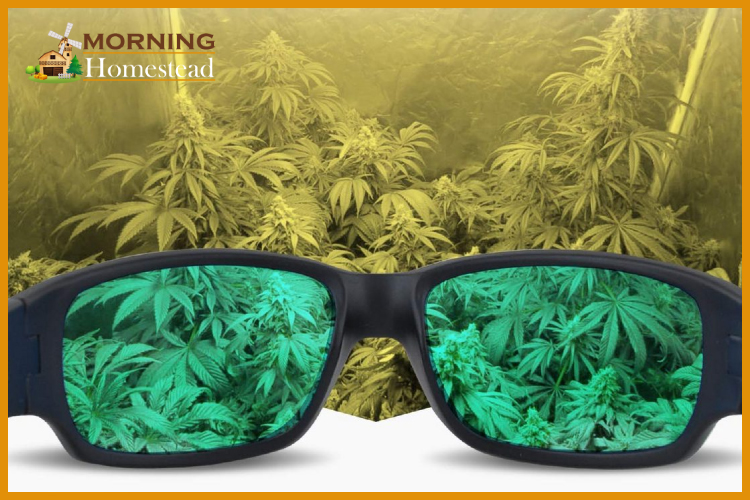Last Updated on June 5, 2023 by Georgie Smith
If you are like most consumers when they first dive into growing plants indoors by way of a hydroponic system, you feel lost. Thanks to guides such as this one for the best CFL grow lights review; you won’t stay lost for long.
Basic Comparison:
SSL
Storage
Domains
Sub-domains
Maxlite MLS18GUWW GU24

Tools Supply
Fluorescent
18 watts
1.0 Count
Daylight CFL
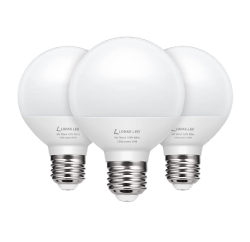
L LOHAS LED
LED
Wattage - 5.00
Bulb Shape Size G25
VIVOSUN T5-4 FT 6500k
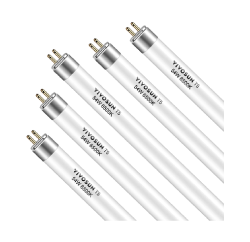
Brand - VIVOSUN
Fluorescent
Commercial
Cool White
There are many concepts for a beginner to learn all there is about AeroGardening and hydroponics. However, understanding the lighting systems is by far the most multifaceted. Not only are there several different versions of indoor grow lights, but there are also many requirements.
However, there is also the understanding one must have to know the properties of the light and why it is the lifeline for plants to harvest. If you are new to AeroGardening, you should start with the most basic, and maybe the lowest-priced light on the market.
The reason for this is that they are perfect for a starter light, are simple to find, and produce multiple varieties of plants. The two most basic lighting systems are CFL and incandescent bulbs. The purpose of this review is to teach others about choosing CFL lighting systems, what they do, and why they work so well.
So, what are the CFL lights?
CFL light bulbs (compact fluorescent light) initially were to replace the traditional incandescent lamp. If that sounds familiar, it is because Thomas Edison historically did not create the traditional one before he was successful.
While the incandescent light bulbs were indeed incredible, the fact is they burn much hotter while wasting tons of electricity. The average bulb puts out 90 percent heat and 10 percent light. With those numbers, you get a better understanding of why touching a hot bulb usually removes your skin. [1]
However, CFL bulbs last up to ten times extended periods than the original incandescent bulb and it puts out much less heat. The CFL light takes less wattage to provide the exact same amount of lumen output as the original style.
Why Using CFL Grow Lights is Best
There are many reasons that beginners, as well as expert gardeners, rather use CFL lights instead of the costlier product. To name a few of those types is the metal halide, high-pressure sodium, and costly LED systems.
The following are reasons many indoor gardeners instead use CFL lights, these are:
- Easily Availability
- Low Cost
- Extremely Customizable
- Low Electricity Expenditure
- No Unique Fixtures Required
- Available in Numerous Wattages, Sizes, and Shapes
- Can be Extremely Close to the Plants Without Causing Damage
Various Types of CFLs
With gardening, the two primary types of CFLs that matter are daylight and soft white bulbs. The following are the different types, where they work best, and the color temperatures of each.
- Soft White and Warm White: These are the standard colors of various traditional incandescent bulbs. 2700K and 3000K
- Neutral, Bright White, and Cool White: These are perfect for workspaces and kitchens. 3500K and 4100K
- Daylight or Natural: Perfect for reading. 5000K and 6500K
Color Temperatures are Vital in Various CFL Bulbs
Color temperature is the primary difference between the two bulb types. It is also a vital characteristic of the lighting needed to grow plants. The reason why is that plants need a variety of temperatures of light throughout different growth phases.
Due to this, you need always to use a mixture of both bulb types if you choose to use CFLs for harvesting. Without each, you will starve your plants of the mix of lights they require throughout the entire growth cycle.
The Facts About the Full-Color Temperature Spectrum
Understanding the properties of CFL lights will help you choose which is best for you. Before we get into the Best CFL Grow Lights, take a look at the breakdown of different types.
The following is a breakdown of the various types of CFL bulbs available.
Daylight CFL Bulbs (5000K-6500K)
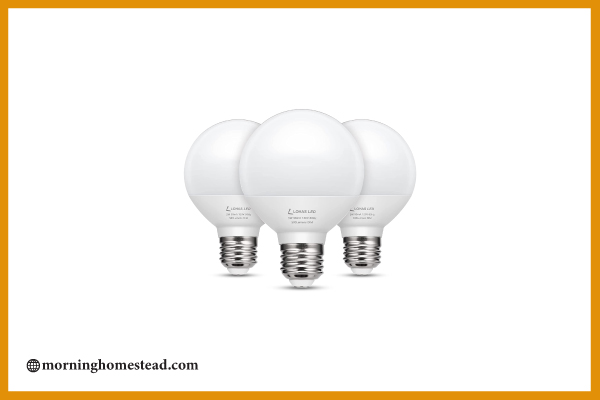
Daylight CFL bulbs, such as this product, are the leader in vegetable phase growth. That phase is when plants put out vast amounts of leaves while multiplying with anticipation of the flowering period.
Lighting fixtures and daylight bulbs are the prime choices for the beginning stages of the plant’s life cycle due to this reason. It also saves a ton of power from overusing a metal halide or high-pressure sodium system throughout the vegetative phase.
Also, this type of CFL can be closer to the plants than one that puts out higher heat amounts. Therefore, your stems will not stretch out, and your plants will not burn. Both weaken the overall health of each plant.
Bright White and Cool White (3500-4100K)
The light bulbs that fall in this variety are the middle ground and are not the most optimal. That includes the flowering or vegetable phases of the plant life cycle. Consumers suggest staying away from the type that falls in this category. Alternate suggestions are to use one or two as supplements to bulbs that fall in the two various ranges.
Soft White and Warm White (2700K-3000K)
For the flowering phase of your plant’s life cycle, this range is best. The warmth of the light mimics the sun at the stage when it is vital. This phase is when the plant begins to spread seeds and flowers so the next generation can start sprouting.
What are the Best CFL Bulbs?
If you are growing using CFLs, you have two choices. You can create your own system by using separate bulbs, or you can use a lighting fixture. If you choose the first option, you need to keep one thing in mind. Advertisements tell the true wattage of the CFL bulbs with an incandescent equivalent.
You may see an advertisement such as “32-Watt CFL Energy Smart Bulb—100-Watt Replacement.” Just consider the true wattage instead of the replacement wattage. Make your choice from this information.
Best-Selling Soft White CFL Bulb
Maxlite MLS18GUWW GU24 Base Compact Fluorescent Light Bulb, 18-watt

Features:
- Fits all standard fixtures due to its small size
- Last up to 10,000 hours of use
- With a GU24 base, it has an extended-lasting life
- Cuts utility cost by 75 percent
- Flicker-Free usage thanks to the swift start of electronic ballast
This CFL bulb is a best-seller in its category. Some consider it to be costly but defend the efficiency and satisfaction throughout the flowering stage. For maximum light intensity, you will need at least four or five to produce fruits and flowers on your plants.
You can find this product by clicking below:
Best-Selling Daylight CFL Bulb
Agrobrite FLC26D 26-Watt Spiral Compact Fluorescent Grow Light Bulb (130W equivalent CFL), 6400K.
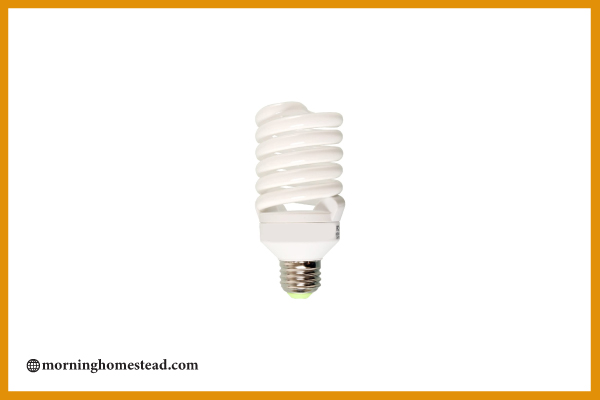
Features:
- 6400K-26-watt bulb equals a 130W Incandescent
- UL Listed
- Compact Fluorescent Spiral Grow Bulbs Save Energy Costs
- Has a medium base and will fit all standard light fixtures
- Last on average 10,000 and produces 1600 lumens
The Maxlite 26w listed below is a favorite, and best-selling vegetative or daylight CFL bulb on the market. Consumers just like yourself made this a leader in its category. One primary reason the product is a favorite is due to the high-quality products Maxlite continues to reveal.
To produce quality throughout the vegetative phase, you will need four or five bulbs to provide the right amount of light output. The good news is, the product has a stellar warranty that backs its performance.
Place your order by clicking on the link below to take advantage of discounts and shipping details.
Best-Selling CFL Grow Lights
For gardeners starting in AeroGardens, it is best to start with a CFL light fixture. There is little to do on your part because the system comes already set up. There is no mass of bulbs to put together before you can get your garden started.
That not only saves much time, it also prevents a lot of frustration and headaches if you are unfamiliar with making your own setup.
Hydrofarm Agrobrite FLT24 T5 Fluorescent Grow Light System, 2-Foot, 4 Tube

Features:
- Steel Housing that has a Powder Coating
- Includes 8-foot Grounded Power Cord
- Contains four 6400K T5 Tubes
- 3 inches H x 13.5 inches W x 23 inches L
If you are new to AeroGardening, the best CFL light for you is the Hydro Farm by Agrobrite. The bulbs that come with each kit are perfect for getting your plants past the vegetative phase during the growth cycle.
Beings this product does not include 2700K bulbs, eventually, you will need to buy some to get your plants to flower. That is of course if you are not growing leafy produce. It is also an excellent idea to buy a few extra in case you need to swap a few around once flowering begins.
Click below to order yours today:
VIVOSUN T5 4 FT 6500k Grow Light Bulbs
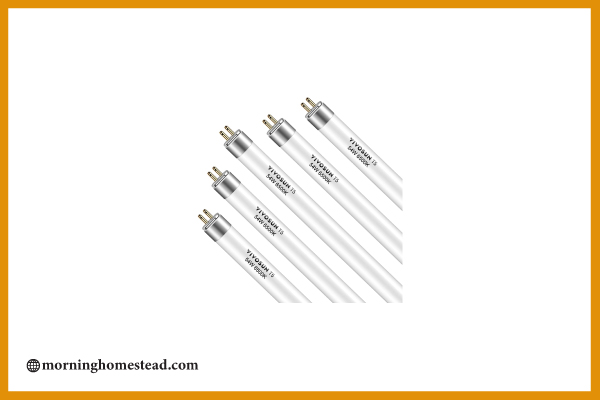
Features:
- Dimensions are 22.12 inches in length and .62 inches in Diameter
- Lumen equals 2,200
- The color temperature is 6500K
- Included in each kit are five T5 bulbs, 24 watts each
Click on the link below to place your order today.
How Many Watts or Bulbs Will I Need?
There is no “one size fits all” when asking this question. Beings each situation is different, a safe answer is, more light is better in this case. Many gardeners start with 100w per plant, depending on the plant. An excellent example of this is if you are setting up your indoor lettuce garden, you would not need much light.
The reason is that lettuce grows fast and only goes through the vegetative stage. Keep in mind that each product does not rely on the incandescent equivalent, but the true wattage instead. Even though you may see advertisements stating the opposite, you should stick with your facts.
It will be evident if you should need to add more lights to your garden. Underwhelming growth will be the first issue you notice. That happens when the system is not covering each angle of your plants adequately.
Remember, the goal here is to mimic sunlight as much as possible and beings the sun covers most plants and moves around, you need to supply the same. Be sure to provide an ample amount of light throughout the day. [2]
Putting CFL Grow Lights to Work
Now you have a better understanding of CFL lights and have ordered your choice; you will need the following practices. CFL has a considerable advantage over various types of light bulbs that plug into regular light sockets.
They each are endlessly customizable so keep that in mind when you are ready to arrange your lights. Light emits from each possible angle of the bulb. Therefore, to get all you can from your CFL lights, ensure your light bulbs point to your plants as much as possible.
Plenty of light comes from the sides other than the front of spiral CFLs. It will help if you make sure to align each side to face the plants rather than the traditional top-down setup. Place your lights four to six inches away from the plants.
FAQs:
Q: Will this type of bulb work in a freshwater fish tank?
A: Yes, but, you will need to buy two for high-light plants.
Q: Are CFL bulbs new to the market?
A: No. These type of bulbs made their way onto the market in the 1940s.
Q: How much mercury is in the bulbs?
A: A minute amount of mercury is in the tubes but mostly in vapor form.
Conclusion
CFL lighting is vital if you want to dip your feet in the AeroGardening world. While there are other options, many consumers that have a history of indoor gardening, recommend you start with CFL lighting systems.
Are you ready to start growing your produce indoors and all year round? If you said yes, then you are in for a treat. Hydroponics is a fantastic technique to grow your own herbs, flowers, and plants. Start today and see why millions of gardeners choose to begin their journey through AeroGardening.
Do you have added input you would like to share with our readers? How about a question for our panel? Please leave a comment in the section below, and we will respond shortly. While you are here, please “like and share” our article so we can help others.





